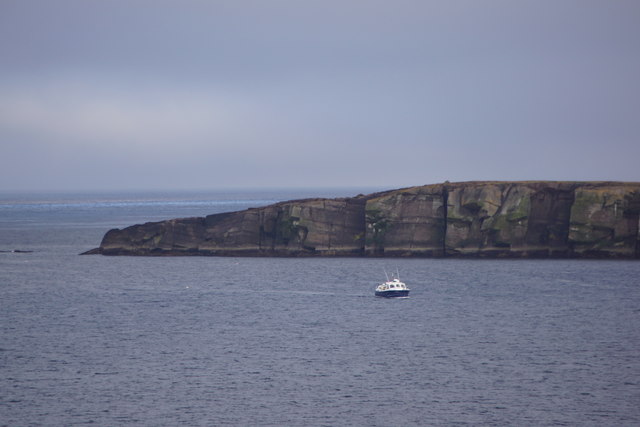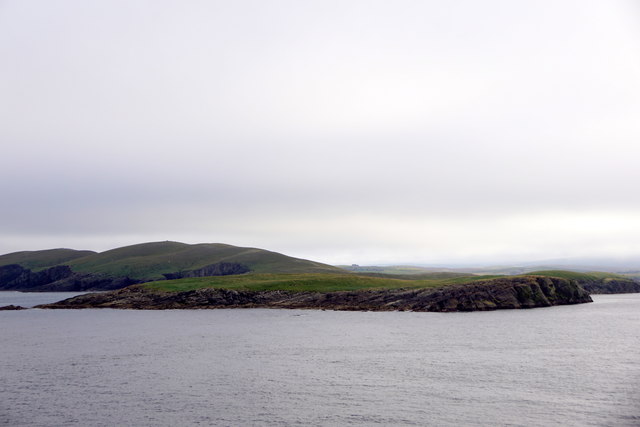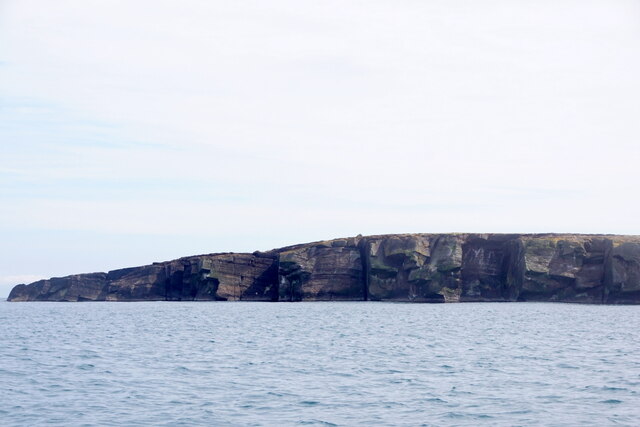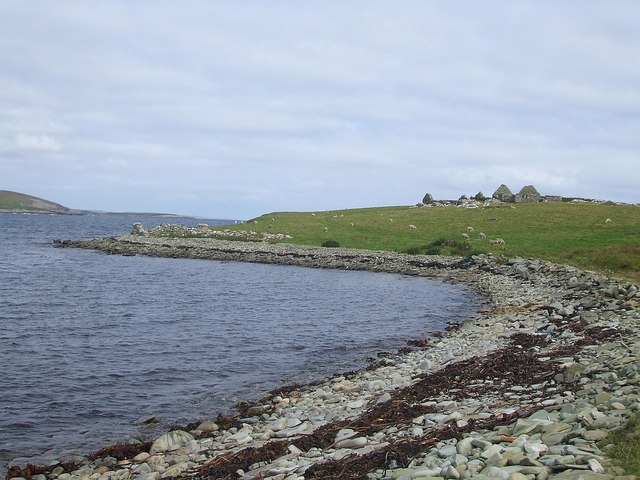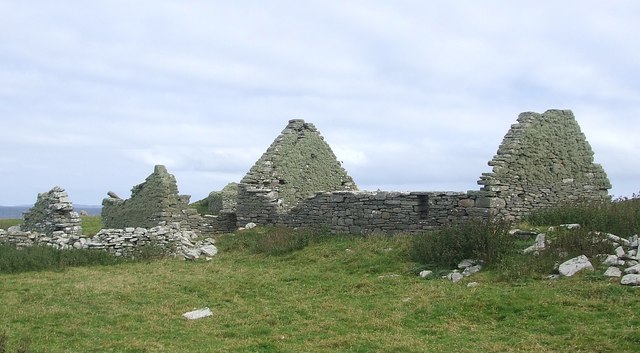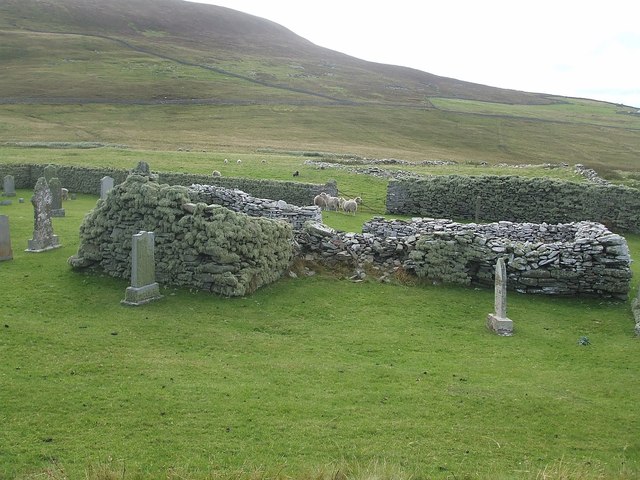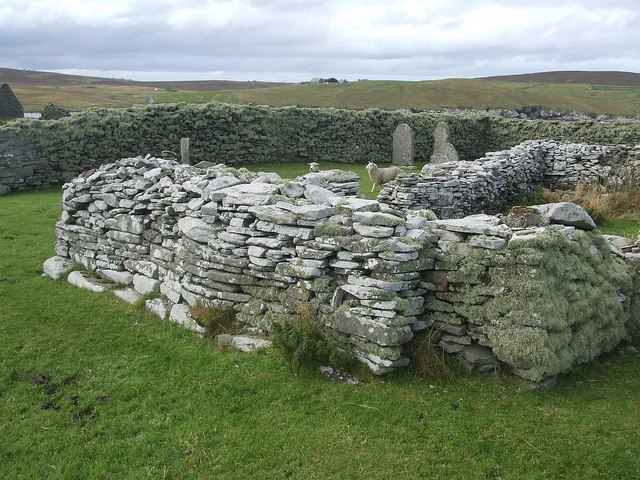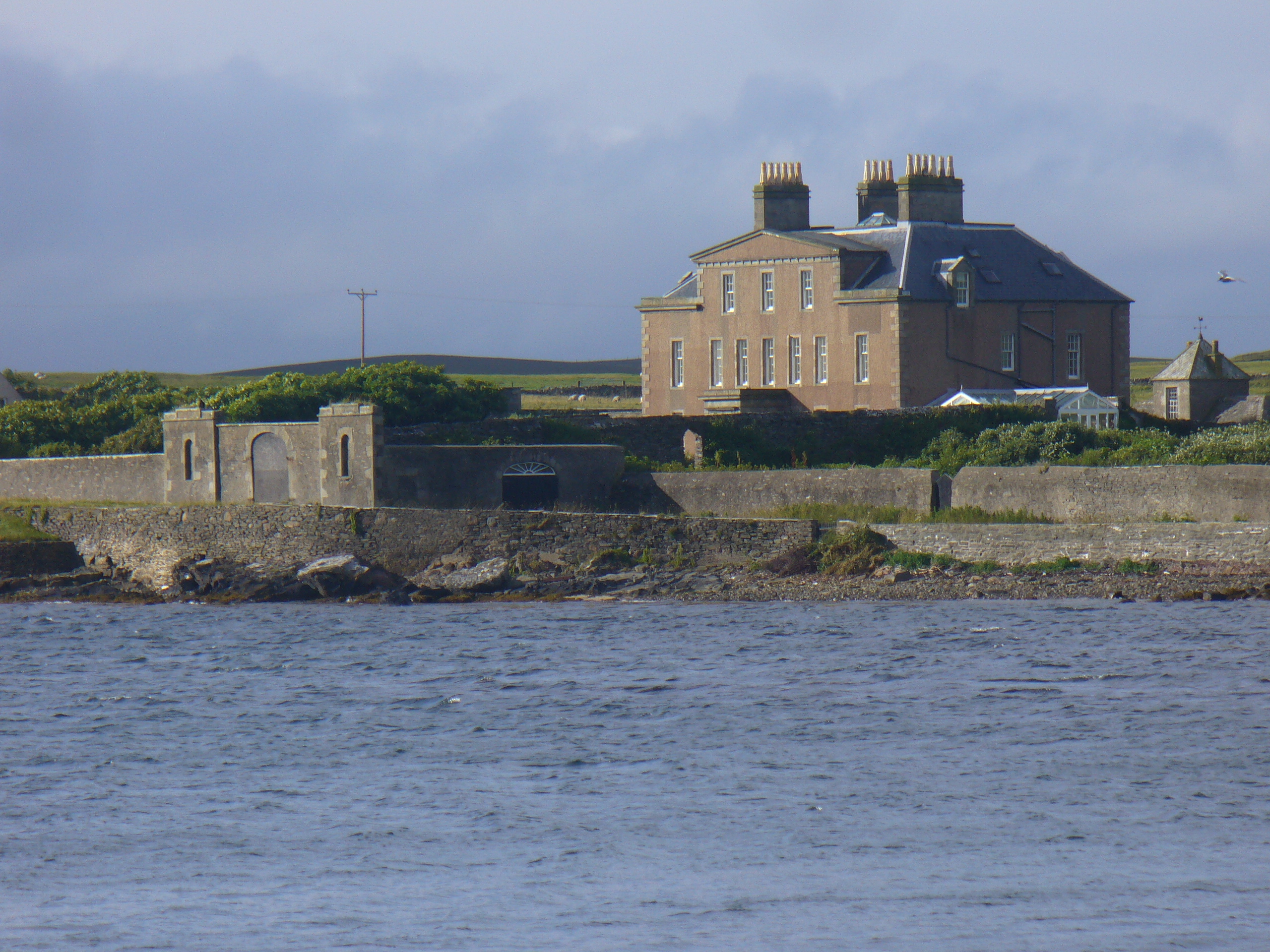Skeo Taing
Coastal Feature, Headland, Point in Shetland
Scotland
Skeo Taing
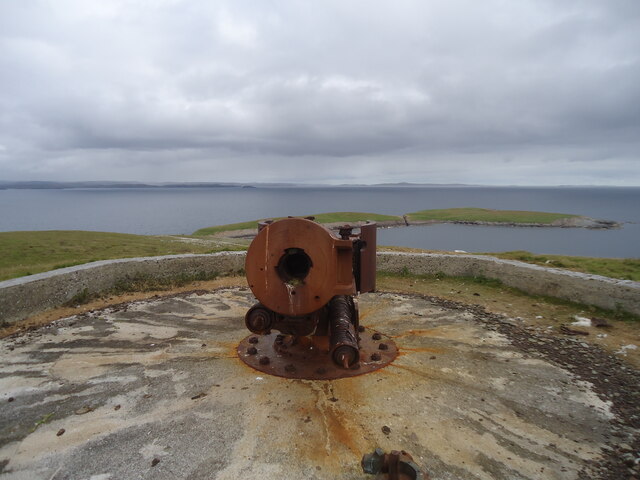
Skeo Taing is a prominent coastal feature located in the Shetland Islands, Scotland. It is a picturesque headland that juts out into the North Sea, forming a distinct point. The name "Skeo Taing" is derived from the Old Norse language, reflecting the Viking influence in the region's history.
This coastal feature is characterized by its rugged and dramatic landscape. The headland is composed of steep cliffs that overlook the sea, providing breathtaking views of the surrounding waters. The cliffs are formed from ancient rocks, displaying layers of different sedimentary formations that offer valuable insights into the geological history of the area.
Skeo Taing is home to a diverse range of flora and fauna, making it a haven for nature enthusiasts. The headland provides habitat for various seabird species, including puffins, guillemots, and kittiwakes, which nest in the cliffs during the breeding season. Visitors can often spot seals and dolphins swimming in the waters surrounding the point, adding to the area's natural charm.
The location of Skeo Taing also holds historical significance. The Shetland Islands have a rich cultural heritage, and this coastal feature serves as a reminder of the islands' past. The area has been inhabited for thousands of years, with evidence of ancient settlements and archaeological sites nearby. The headland's strategic position overlooking the sea would have made it an important vantage point for early inhabitants, offering views of approaching vessels and potential threats.
Overall, Skeo Taing is a captivating coastal feature that combines natural beauty, ecological importance, and historical significance. It is a must-visit destination for those seeking a glimpse into the diverse and fascinating landscape of the Shetland Islands.
If you have any feedback on the listing, please let us know in the comments section below.
Skeo Taing Images
Images are sourced within 2km of 60.177598/-1.0732194 or Grid Reference HU5144. Thanks to Geograph Open Source API. All images are credited.

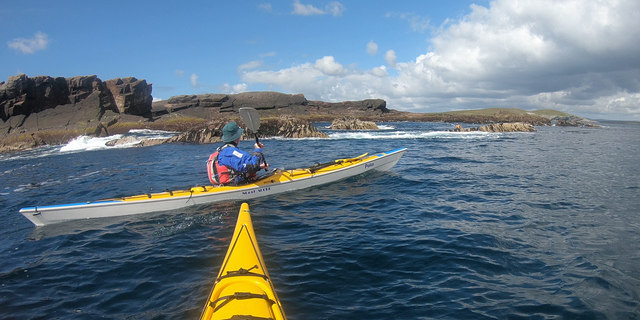
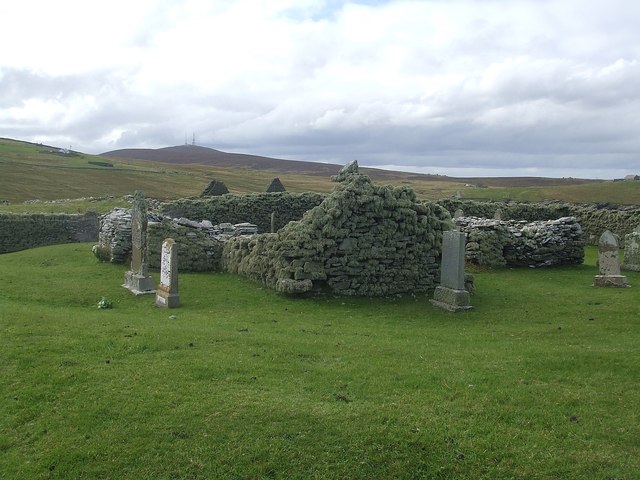
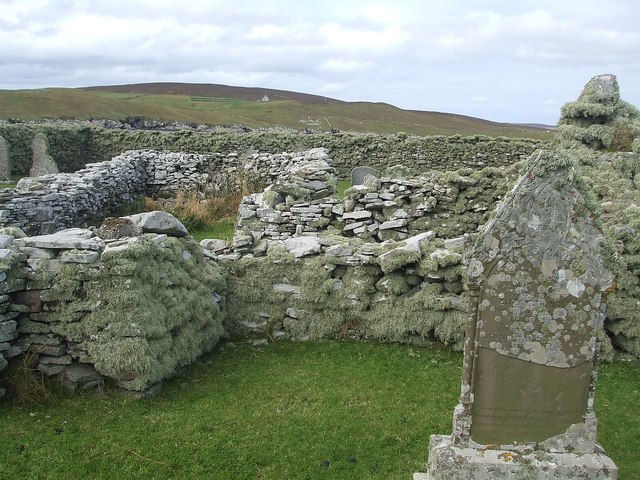


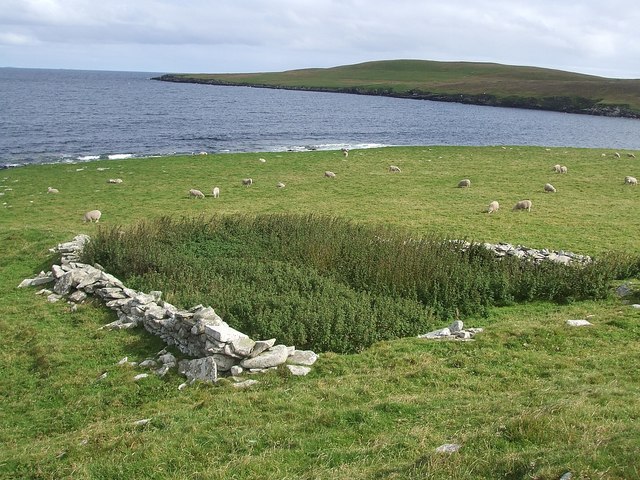
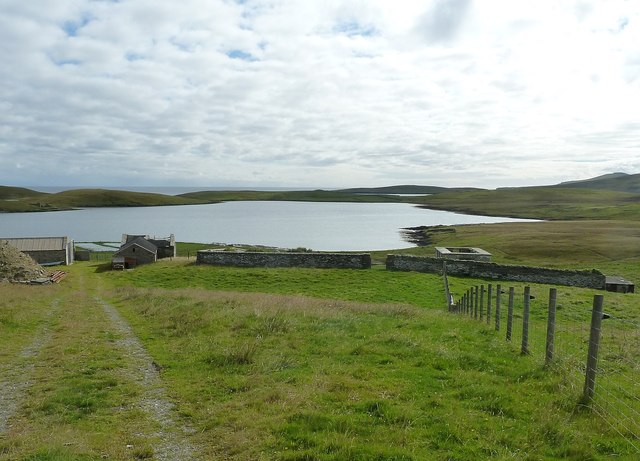
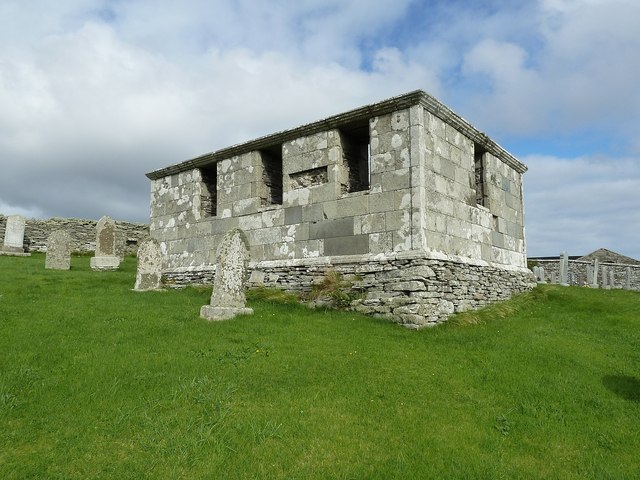
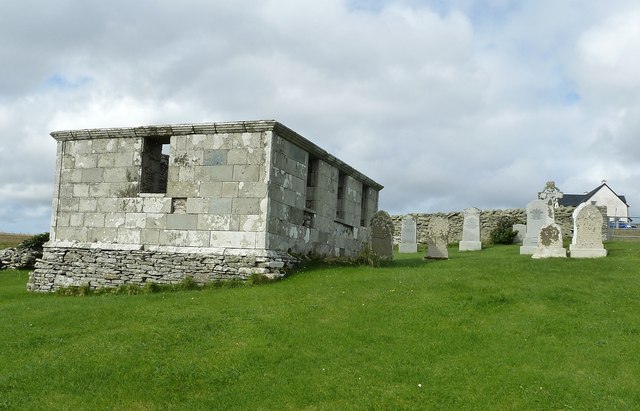
Skeo Taing is located at Grid Ref: HU5144 (Lat: 60.177598, Lng: -1.0732194)
Unitary Authority: Shetland Islands
Police Authority: Highlands and Islands
What 3 Words
///shorten.stag.chum. Near Lerwick, Shetland Islands
Nearby Locations
Related Wikis
Voe of Cullingsburgh
Voe of Cullingsburgh is a large sea loch off the Shetland island of Bressay, voe meaning "sea inlet" in Shetland dialect. The local spelling of the name...
Broch of Cullingsburgh
The Broch of Cullingsburgh is an Iron Age broch located in the Shetland islands. == Location == Located on Bressay, off the east coast of mainland Shetland...
Bressay
Bressay (Scots: Bressa) is a populated island in the Shetland archipelago of Scotland. == Geography and geology == Bressay lies due south of Whalsay, west...
Gardie House
Gardie House is an 18th-century estate house on Bressay in Shetland, Scotland. Located opposite Lerwick, across the Bressay Sound, Gardie is described...
Lerwick and Bressay Parish Church
Lerwick and Bressay Parish Church is the largest Church of Scotland congregation in Shetland, serving the islands' capital Lerwick and the surrounding...
Mareel
Mareel is a multi-purpose entertainment venue located on the waterfront of Lerwick, the capital of Shetland. Opening in 2012, the facility includes a music...
Isle of Noss
The Isle of Noss or Noss (Scots: Noss) is a small, previously inhabited island in Shetland, Scotland. Noss is separated from the island of Bressay by the...
Viking bus station
Viking Bus Station is a bus station in Lerwick, Shetland, Scotland. The station is used both by passengers and for freight, which is transported by bus...
Nearby Amenities
Located within 500m of 60.177598,-1.0732194Have you been to Skeo Taing?
Leave your review of Skeo Taing below (or comments, questions and feedback).
